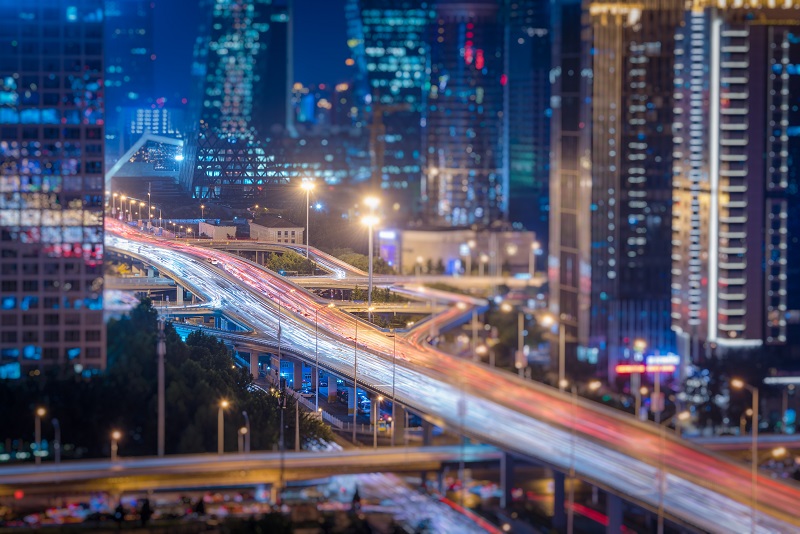From Blueprint to Reality: Unveiling the Vision of Smart Cities
In a world marked by rapid urbanization and an ever-increasing population, Indian Government has been facing with the challenge of finding innovative solutions to accommodate and sustain their citizens’ needs.
The announcement of eight new smart cities by the Indian Government marks a bold and ambitious initiative to alleviate the population burden on existing urban centers.
These future cities are set to harness the power of advanced civil infrastructure technologies, promising to become shining examples of modern living, sustainability, and efficiency.
In this blog, we will explore five to six practices and techniques that are likely to be employed in the development of these smart cities.
- Sustainable Urban Planning and Design
Urban planning and design that is sustainable is a key component of the development of smart cities. Traditional cities frequently have uncontrolled growth and insufficient infrastructure, which causes a host of problems like traffic congestion, pollution, and inefficient resource use. The meticulous development of future smart cities will be given priority, and they will have green areas, walkable neighborhoods, and effective public transportation networks.
These communities will build a harmonic mix of residential, commercial, and recreational spaces by promoting utilization of land development and minimizing urban sprawl, strengthening a sense of community and obviating the need for lengthy commutes.
- Internet of Things (IoT) Integration
The seamless integration of Internet of Things (IoT) technology is one of the defining features of smart cities. IoT makes it possible for multiple systems and equipment to connect and share data, which improves automation and enables real-time monitoring. IoT sensors will be included in these future cities’ infrastructure, including streetlights, waste collection systems, and transportation networks. The overall quality of life for people will improve as a result of this integrated network’s ability to optimize energy use, facilitate effective trash disposal, and give important data for urban planners to make educated decisions.
- Renewable Energy Solutions
The emerging smart cities will mainly rely on renewable energy sources to attain sustainability and lower their carbon impact. The urban environment will be enhanced by the integration of solar panels, wind turbines, and other cutting-edge renewable energy technologies. Along with providing power for the cities, these energy-saving technologies will encourage eco-friendly behavior among the populace. Furthermore, smart grids enable the storage and sharing of surplus energy, assuring a consistent and dependable energy supply.
- Big Data and Predictive Analytics
Data is what makes smart cities successful. Every day, enormous volumes of data will be produced, offering priceless insights into many facets of city life. These data will be processed by cutting-edge analytics and artificial intelligence algorithms to reveal significant patterns, forecast trends, and foresee future problems.
This will make it possible for city managers to proactively address issues like traffic congestion, utility demand, and public safety worries. These new cities will become highly adaptive to changing conditions by utilizing the power of big data in addition to becoming efficient.
- Augmented Reality (AR) for Infrastructure Maintenance
For a city to function well, civil infrastructure needs to be maintained and upheld. Augmented reality (AR) technology may be used by smart cities to aid in infrastructure upkeep activities. Maintenance personnel can obtain real-time data and instructions via AR-enabled devices, such as smart glasses, to spot problems, retrieve repair information, and expedite the repair process. This novel strategy may improve infrastructure efficiency overall and speed up reaction times.
- Resilience and Disaster Management
The adaptability of these smart cities must be ensured because of the serious dangers posed by climate change. The implementation of cutting-edge disaster management systems, such as early warning systems and real-time weather monitoring, is planned. In addition, the cities will use resilient infrastructure to withstand natural calamities and lessen their effects on the lives of the citizens. The government wants to build cities that can withstand unforeseen difficulties and come out stronger by putting resilience first.
Conclusion
The government’s brave choice to create eight new smart cities represents a bold step in reshaping the future as our planet races toward an urbanized one. These cities are positioned to become bulwarks of development and effectiveness through sustainable planning, IoT integration, renewable energy, data-driven solutions, citizen involvement, and resilience measures.
Let us hold out hope that these smart cities will encourage others to embrace such transformative measures, ushering in an era of smarter, greener, and more livable urban landscapes as we eagerly await the completion of this ambitious project.
